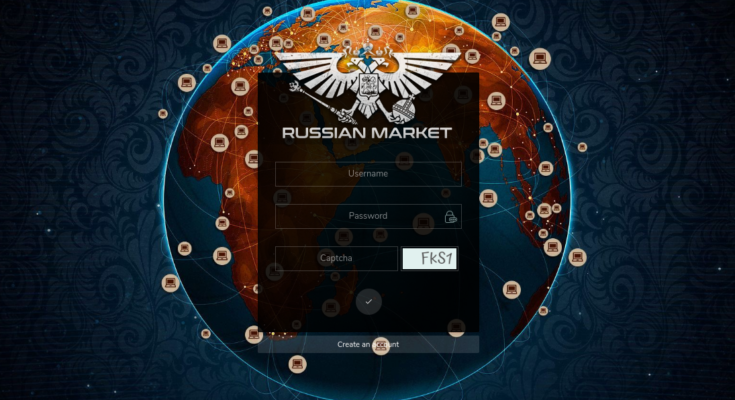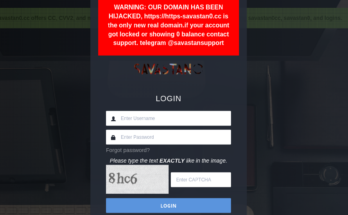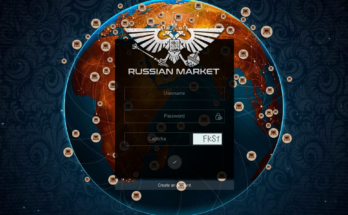The term “Russian market” has gained traction in recent years, primarily due to its association with various illegal activities, particularly in the realm of cybercrime. This online marketplace is often linked to the trading of sensitive data, including dumps, RDP access, and CVV2 shop transactions. Understanding these components is crucial for anyone navigating the complexities of online security and financial safety. This article aims to explore the elements of the Russian market and their implications for individuals and businesses alike.
Table of Contents
What Is the Russian Market?
The Russian market refers to a segment of the dark web where illegal goods and services are exchanged. This online space is often home to cybercriminals looking to exploit vulnerabilities in financial systems, making it a hotspot for various types of fraud. Here, users can buy and sell stolen data, hacking tools, and access to compromised systems, all under the veil of anonymity provided by the dark web.
Why Are Dumps Significant in the Russian Market?
One of the primary commodities in the Russian market is dumps, which are digital records of stolen credit card information. These dumps include vital details such as card numbers, expiration dates, and security codes (CVV). But why are dumps so highly sought after?
- High Demand: Stolen card information is in constant demand because it allows criminals to make fraudulent purchases without raising immediate suspicion. Since credit cards are widely used for online transactions, access to these dumps can lead to significant financial gain for cybercriminals.
- Profitability: The profitability of selling dumps cannot be overstated. A single dump can be sold for anywhere from $5 to hundreds of dollars, depending on the card’s limits and usability. For hackers, this creates a lucrative business model, incentivizing the continued theft of card information.
- Ease of Access: Dumps are readily available on various dark web platforms. Once criminals obtain this information, they can use it to clone cards or make online purchases, often before victims are even aware of the breach.
How Is RDP Access Misused?
Remote Desktop Protocol (RDP) access is another significant aspect of the Russian market. This technology enables users to connect remotely to another computer, which can be exploited by cybercriminals. But how exactly is RDP access misused?
- Unauthorized Access: Cybercriminals frequently target poorly secured RDP connections to gain unauthorized access to corporate networks. Once they obtain credentials, they can infiltrate systems, steal sensitive information, or deploy malware. This vulnerability has become a prevalent attack vector, especially as remote work becomes more common.
- Data Breaches: Gaining access through RDP can lead to extensive data breaches. Cybercriminals can navigate internal systems to locate valuable data, including customer information and financial records. The sale of this data on the Russian market is often highly profitable, making it a primary target for hackers.
- Ransomware Attacks: RDP access is also a gateway for ransomware attacks. Once inside a network, hackers can encrypt files and demand a ransom for decryption keys. Businesses often face severe financial consequences due to operational downtime and the costs associated with recovering from such attacks.
What Are CVV2 Shops, and Why Are They Important?
CVV2 shops are specialized marketplaces within the Russian market that focus on selling stolen credit card data, particularly the Card Verification Value (CVV) numbers. Understanding how these shops operate is essential for grasping the broader scope of cybercrime.
- Data Sales: CVV2 shops typically sell complete card details, including card numbers, expiration dates, and CVV codes. This combination enables buyers to make online purchases that appear legitimate, further perpetuating credit card fraud.
- Cryptocurrency Transactions: Transactions in CVV2 shops are often conducted using cryptocurrencies like Bitcoin. This choice provides anonymity for both buyers and sellers, complicating law enforcement’s efforts to track illicit activities. The use of digital currencies allows criminals to engage in transactions without revealing their identities.
- Reputation Systems: Interestingly, CVV2 shops often have user review systems similar to legitimate e-commerce platforms. Buyers can evaluate sellers based on the quality of their data and overall reliability. This competitive environment encourages sellers to provide high-quality stolen information, creating a robust marketplace for fraudulent activities.
What Are the Cybersecurity Implications?
The activities associated with the Russian market raise significant concerns about cybersecurity. As online transactions become more prevalent, the risks associated with cybercrime increase. What can be done to mitigate these threats?
- Education and Awareness: One of the most effective ways to combat cybercrime is through education. Consumers need to understand the risks associated with online transactions and how to protect themselves. By promoting awareness of phishing scams, the importance of strong passwords, and the need for two-factor authentication, individuals can take proactive measures to safeguard their information.
- Strengthening Security Measures: Organizations must prioritize cybersecurity to protect their networks. This includes implementing robust firewalls, conducting regular security audits, and providing employees with training to recognize potential threats. A strong security posture can help mitigate the risks associated with unauthorized access and data breaches.
- Collaboration Among Law Enforcement: Combating cybercrime requires collaboration among law enforcement agencies at both national and international levels. By sharing information and resources, agencies can develop more effective strategies to track and apprehend cybercriminals operating in the Russian market and beyond.
- Advocating for Regulatory Changes: Governments can play a significant role in addressing cybercrime by enforcing stricter regulations on data protection and cybersecurity practices. By creating a regulatory framework that holds organizations accountable for data breaches, authorities can help foster a safer online environment.
Conclusion
The Russian market serves as a complex hub for various forms of cybercrime, including the trade of dumps, RDP access, and CVV2 shops. Understanding these elements is essential for individuals and businesses looking to navigate the challenges posed by online fraud. As technology continues to evolve, remaining vigilant and informed is crucial for mitigating risks associated with digital transactions.
The responsibility to protect oneself lies with both consumers and businesses. By prioritizing cybersecurity, promoting awareness, and collaborating to combat cyber threats, we can work towards a safer digital landscape. In an era increasingly defined by technology, understanding the intricacies of the Russian market is vital for safeguarding our financial futures and ensuring the integrity of our online experiences. The fight against cybercrime requires ongoing effort and vigilance, but by taking proactive steps, we can make strides in creating a more secure digital world.



